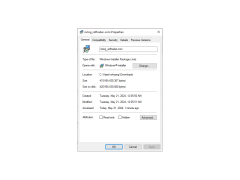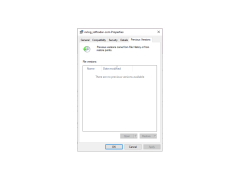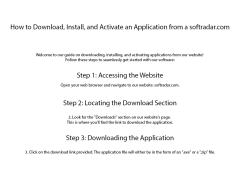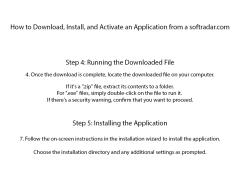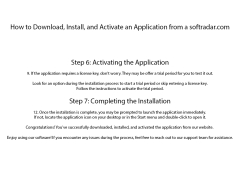
nxlog
by Botond Botyanszki
Nxlog is a multi-platform, open-source log collection and forwarding solution for collecting, transforming and forwarding log data from across the IT infrastructure.
Operating system: Windows
Publisher: Botond Botyanszki
Release : nxlog 2.9.1716
Antivirus check: passed
NXLog
NXLog is a comprehensive log management and data collection solution. It enables organizations to monitor, analyze, and respond to events in real-time. NXLog is designed to be easily deployed and managed, even in complex and distributed IT environments. It collects data from various sources, including Windows and Linux machines, network devices, applications, and log files. NXLog provides advanced features such as log aggregation, filtering, alerting, and output to various formats, including syslog, databases, and files.
-Collects data from various sources, including Windows and Linux machines, network devices, applications, and log files.
-Supports multiple input formats such as Windows Event Logs, syslog, plain text, JSON, XML, and CSV.
-Supports multiple output formats such as syslog, databases, and files.
-Provides advanced features such as log aggregation, filtering, alerting, and output to various formats.
-Supports secure communications using SSL/TLS encryption and SSH tunneling.
-Provides out-of-the-box support for popular applications such as Apache, MySQL, IIS, and PostgreSQL.
-Provides flexible configuration options for log collection and forwarding.
-Provides a graphical user interface for configuring and managing the system.
-Provides an API for programmatic access and integration with other systems.
-Provides real-time alerting and notifications.
-Integrated with Splunk, Graylog, and other logging solutions.
-Supports deployment in virtualized environment.
-Provides support for Windows, Linux, and macOS platforms.
Benefits
-Centralize log collection and analysis from multiple sources.
-Gain insights into system performance, security, and compliance issues.
-Reduce the time and effort required for troubleshooting.
-Easily deploy and manage in complex and distributed IT environments.
-Keep track of changes to configuration and system data.
-Monitor system activities and respond to security threats in real-time.
-Reduce the costs associated with log storage and analysis.
-Improve system reliability and uptime.
-Audit system activities and detect suspicious activity.
-Retain historical logs for compliance and legal purposes.
-Generate reports for audit and compliance purposes.
-Integrate with existing systems and tools.
NXLog is a comprehensive log management and data collection solution. It enables organizations to monitor, analyze, and respond to events in real-time. NXLog is designed to be easily deployed and managed, even in complex and distributed IT environments. It collects data from various sources, including Windows and Linux machines, network devices, applications, and log files. NXLog provides advanced features such as log aggregation, filtering, alerting, and output to various formats, including syslog, databases, and files.
Nxlog simplifies log collection, processing and forwarding, enabling organizations to centrally manage and analyze their log data.Features:
-Collects data from various sources, including Windows and Linux machines, network devices, applications, and log files.
-Supports multiple input formats such as Windows Event Logs, syslog, plain text, JSON, XML, and CSV.
-Supports multiple output formats such as syslog, databases, and files.
-Provides advanced features such as log aggregation, filtering, alerting, and output to various formats.
-Supports secure communications using SSL/TLS encryption and SSH tunneling.
-Provides out-of-the-box support for popular applications such as Apache, MySQL, IIS, and PostgreSQL.
-Provides flexible configuration options for log collection and forwarding.
-Provides a graphical user interface for configuring and managing the system.
-Provides an API for programmatic access and integration with other systems.
-Provides real-time alerting and notifications.
-Integrated with Splunk, Graylog, and other logging solutions.
-Supports deployment in virtualized environment.
-Provides support for Windows, Linux, and macOS platforms.
Benefits
-Centralize log collection and analysis from multiple sources.
-Gain insights into system performance, security, and compliance issues.
-Reduce the time and effort required for troubleshooting.
-Easily deploy and manage in complex and distributed IT environments.
-Keep track of changes to configuration and system data.
-Monitor system activities and respond to security threats in real-time.
-Reduce the costs associated with log storage and analysis.
-Improve system reliability and uptime.
-Audit system activities and detect suspicious activity.
-Retain historical logs for compliance and legal purposes.
-Generate reports for audit and compliance purposes.
-Integrate with existing systems and tools.
NXLog requires a minimum of Windows XP or a modern Linux operating system, such as CentOS, Ubuntu, Debian, Red Hat Enterprise Linux, or openSUSE. It requires 512 MB of RAM and 1 GHz processor or higher. It also requires an internet connection for downloading updates or modules.
PROS
Supports multiple platforms and log sources for versatile use.
Robust filtering and routing capabilities enhance performance.
Can handle high volumes of data without lagging.
Robust filtering and routing capabilities enhance performance.
Can handle high volumes of data without lagging.
CONS
Requires advanced knowledge to fully understand and use its features.
Limited support for less common log sources or formats.
Steep learning curve for beginners and non-technical users.
Limited support for less common log sources or formats.
Steep learning curve for beginners and non-technical users.
Tyler Bertera
I've been using the nxlog software for a few months now. It's been a great choice for collecting and forwarding data from multiple sources. It's easy to install and configure, saving me a lot of time and hassle. It's also reliable, with good uptime and minimal maintenance. Log files are easy to read and parse, making it easy to troubleshoot issues. I really appreciate the fact that it's open source and free, making it an affordable choice. It also has a good support community, with helpful answers to my questions. So far, I'm very happy with nxlog.


